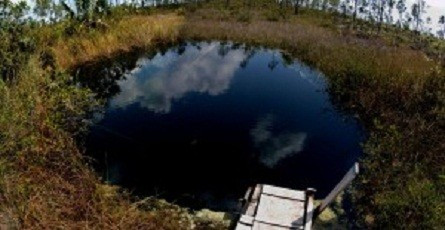Blue Holes Give Clue to How Life Was Formed

Researchers from the Texas A&M University at Galveston claim to have got a clue to how marine life was formed on the Earth.
Researchers have discovered bacteria life in three blue holes in the Bahamas. They had examined two caves on Abaco Island and one on Andros Island.
According to the researchers, one cave on Abaco Island had lots of bacteria attached to its walls, almost one inch thick and around 100 feet in depth. Another cave on this island had different forms of bacteria that were living within poisonous clouds of hydrogen sulfide at the boundary between fresh and salt water.
Researchers discovered different types of bacteria in a cave on Andros Island. The cave contained a poisonous cloud, something similar to hydrogen sulfide. The life forms in that caves have adapted to that particular habitat.
The researchers found that some types of the bacteria could live in these environments, where no other life forms could survive.
These bacteria have evolved over millions of years and have found a way to live under these extreme conditions. These bacterial forms of life may be similar to microbes that existed on the Earth and it provides a glimpse into how life evolved on this planet.
Blue holes are inland caves or underwater sink holes that are located in low-lying coastal area. They have a circular entrance and it is approximately 380 feet in depth. Blue holes are unfavorable for most sea life because of their poor water circulation. The world's deepest blue hole is located at Tamaulipas in Mexico, it is around 1,100 feet in depth.
"The microbes change where the salt water meets fresh water within the caves and use chemical energy to produce their food. They can survive in environments with very low amounts of oxygen and light," says Tom Iliffe, professor of marine biology at the Texas A&M-Galveston campus. "These caves are natural laboratories where we can study life existing under conditions analogous to what was present many millions of years ago."
"There is no telling what remains to be discovered in the many thousands of caves that no one has ever entered. If life exists elsewhere in our solar system, it most likely would be found in water-filled subterranean environments, perhaps equivalent to those we are studying in the Bahamas," he added.
© Copyright IBTimes 2025. All rights reserved.





















